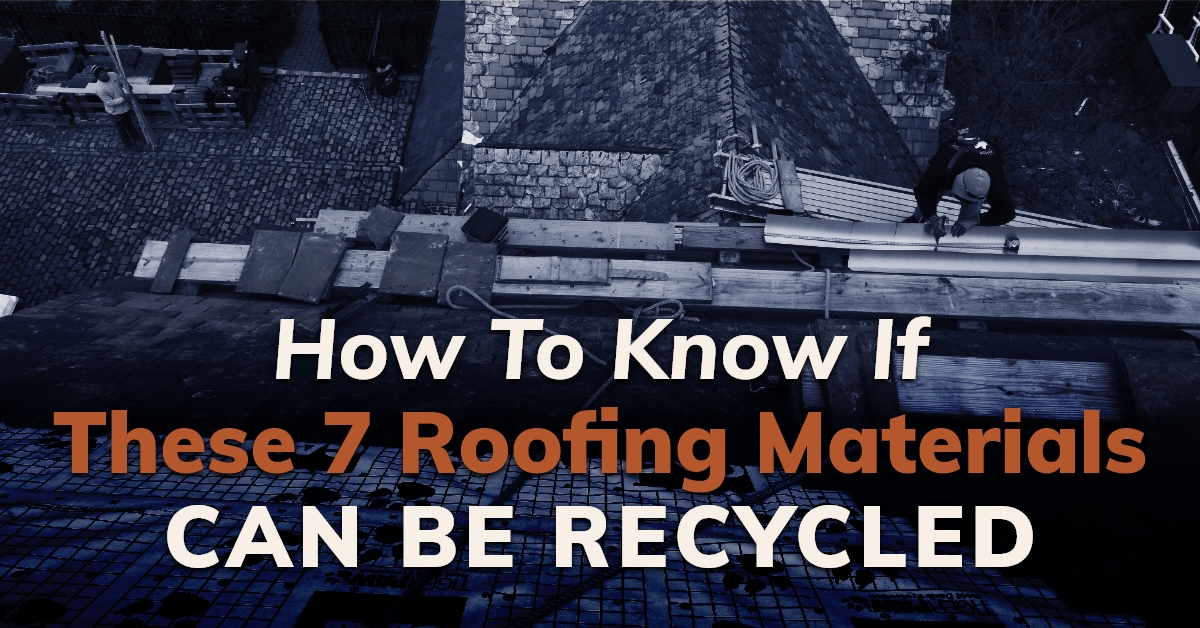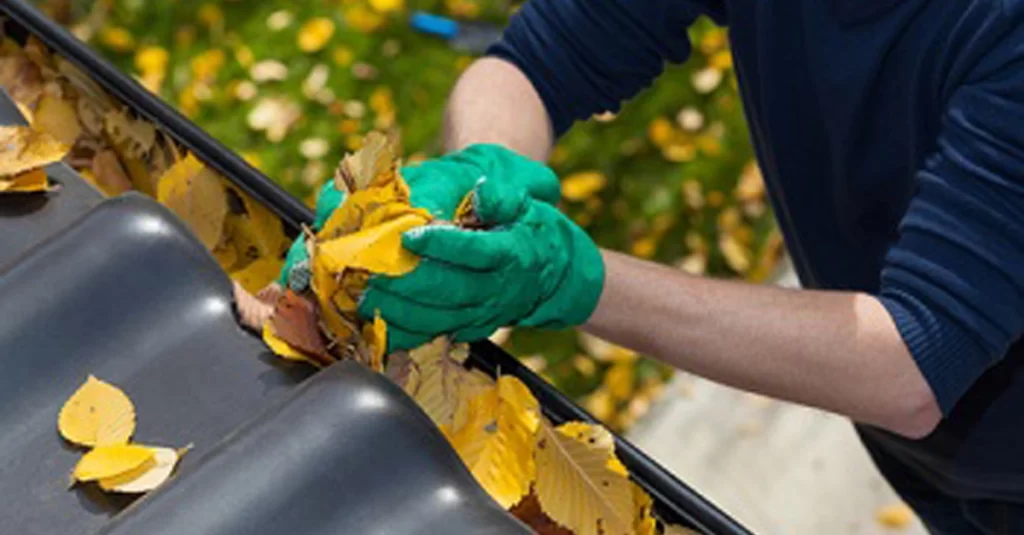
Recycling is vital in every area of life, and the roofing industry is no different. In the past decade or two, many individuals, organizations, and companies have emphasized incorporating more sustainable practices into their daily lives and operations. This gave birth to the recycling of building materials, including different roofing types such as shingles, metal, and tile.
But do you know what kind of roofing materials can be recycled? Fortunately, most roofing materials are recyclable, and leading roofing material manufacturers increasingly integrate sustainability into their products and recommendations. In this article, we discuss why recycling roofing materials even matters and highlight seven common roof types which are recyclable.
Why Recycling Roofing Materials Is Important
Overall, recycling roof tiles and other roofing materials is a labor-intensive process. It is easier to remove the old material, throw it in a dumpster, and forget about it. But this is not good for the environment.
Ultimately, recycling roofing materials helps reduce your carbon footprint – the amount of carbon dioxide or other carbon compounds released into the atmosphere by the actions of an individual, a company, a country, etc. Every product we consume requires energy to be produced, transported, or incinerated at a landfill (further polluting the atmosphere by using fossil fuels).
Recycling products helps reduce the carbon footprint you leave by minimizing the number of products manufactured from raw materials, and lowering the required energy. Plus, recycling products helps reduce the amount of debris in landfills.
1. Asphalt Shingles
Asphalt shingles are perhaps the most common roofing materials people use today and are easily recycled. There is a misconception that shingles are not recyclable because they’re made from petroleum-based materials. Recycling old shingles creates opportunities for manufacturers to make new shingles or for roads to be built.
An estimated 11 million tons of asphalt shingles are added to landfills in the United States every year. In a landfill, it takes around 300 years for shingles to break down completely. But with recent developments in the efforts to reduce waste and the three R’s (Reduce, Reuse, Recycle), asphalt shingles can now be recycled. Old asphalt shingles can be brought to a reputable recycling center or your roofing material manufacturer, who can convert them into new shingles or other products like driveways, roads, or walkways.
2. Metal Roofing
Metal roofing materials last a very long time, but metal roofing panels can be recycled when it becomes necessary to replace a roofing system. Fortunately, metal roofing is 100% recyclable. This means old panels and leftover metal scraps can be recycled and used in future metal products, like appliances, plumbing, etc. Common roofing materials such as Galvalume®, galvanized, aluminum, copper, and stainless steel are all recyclable.
Some coils and sheets used to make metal roofing panels could also contain previously recycled metals. Using recycled metals in large quantities dramatically reduces the energy and resources needed to create a new steel coil or metal sheet. Here are some statistics indicating how recycling metal can save money and the environment:
- Recycled aluminum consumes 5% of the original energy
- Recycled steel (Galvalume) utilizes 26% of the original energy
3. Tile Roofs
Tiles made from clay and concrete will last a long time, but they often end up in landfills. There are many ways you can reduce this waste. Tiles are easily recycled as they are mineral-based and do not contain any harmful chemicals. They can be recycled to make gravel or used for other purposes.
Sustainability is one of the main reasons clay and concrete roof tiles are as valuable as metal roofing. Recycling old tiles won’t take up lots of space in landfills; if they do end up there, they will be less hazardous to the environment. There are numerous uses for recycled clay and concrete roofing tiles, including:
- Construction projects such as covering pavements
- Being crushed into gravel
- Sidewalks and walkway paths
- Use in landscaping around properties
4. Slate Roofing
If you’re thinking about replacing or recycling your historic slate roof, there are a few things you should know. Many slate roofs can last up to 100 years, so a simple repair or renovation may be all your roof needs. Recycling roof slates when restoring, repairing, or replacing your roof can be the best option.
Here are some exciting ideas for using old slate:
- Pond lining
- Mosaic area
- An outdoor mural
- Edging around vegetable or flower gardens
5. Copper Roofing
Copper is one of the most efficiently recyclable metals, especially in the form of pipes and other connections which allow copper pipes to be connected to different metal structures such as bridges and houses. Most people don’t realize it, but roughly half of the copper used in the US today is recycled. It is very durable, which is part of the reason why copper is so easily recycled.
Copper is very resistant to corrosion; some ancient buildings in Europe and Japan even still have their original roofs. When it’s time to tear off your old copper roof, many recycling facilities will be more than willing to accept the removed debris. They will sort the scrap copper, bundle it, and sell it.
Refineries buy the copper and turn it into pure copper. Being able to re-refine recycled copper helps to save energy because all the work required to mine, crush, and smelt copper ore no longer needs to be done. Re-processing used copper requires less energy than mining it, and because of its reduced energy needs, it causes fewer harmful gases to be emitted into the atmosphere. There’s no question: recycling copper can help the environment.
6. Flat Roofing
Many flat roofing materials such as PVC, modified bitumen, EPDM, and built-up roofs are recyclable. For example, EPDM (ethylene propylene diene monomer) is a synthetic rubber used to form a rubber roof for commercial structures. This type of roof is commonly used in low slope or flat roofing applications. EPDM has become very popular in the past decade due to its lower cost, easy installation and replacement, and lightweight properties.
Before 2006, there wasn’t a reliable way to recycle EPDM when it was removed from a roof. EPDM roofing products are often dumped in landfills after being replaced by a new roof; the EPDM Roofing Association (ERA) wants to avoid the waste. So, they created the first EPDM roof recycling program. Typically, the EPDM is sent back to the factory, where it is processed into different types of rubber, including making waterproof materials and durable flooring.
7. Wood Shake Roofing
Recycling cedar or other types of wood roofing is a bit more difficult. Because no recycling centers accept wood shakes, you must make sure you reuse them. But thanks to recent developments in the roofing industry, Eco-shake® is a roof which uses 100% recycled material, reinforced vinyl, and cellulose fibers. Eco-shake shingles are designed to look like and work well with existing wood shake shingles.
These shakes have a Class A fire rating and a Class 4 impact rating, the highest ratings from Underwriters Laboratories (UL®). It is lightweight and installed in over 45 states, Canadian provinces, and the Caribbean. It stays strong even in severe weather conditions and doesn’t warp or curl when exposed to extreme temperatures. Eco-shake shingles require no maintenance and are so durable they are covered by a 50-year warranty.
Common ways you can recycle used wood shakes include:
- Grinding them down to make wood chips for landscaping
- Donating to churches, artists, or other entities can use for various projects
At Stevens Roofing, we take the environment seriously and do our best to keep our roofing practices green. We only use environmentally-friendly materials and can help you with recycling when needed. Get in touch with us today to see which materials will be the most eco-friendly for your next roofing project. Our ultimate goal is to help you keep your home and the environment safe for generations. Call Stevens Roofing in Norfolk, VA, today to schedule your consultation!





